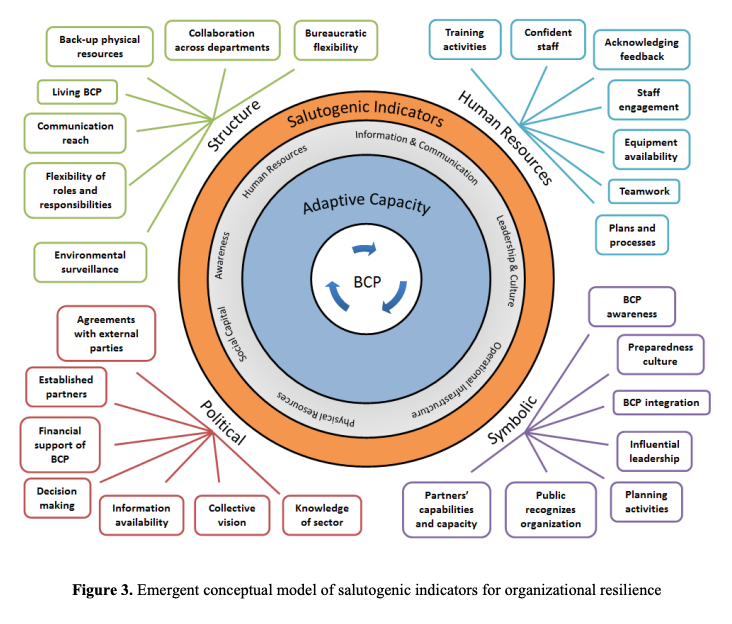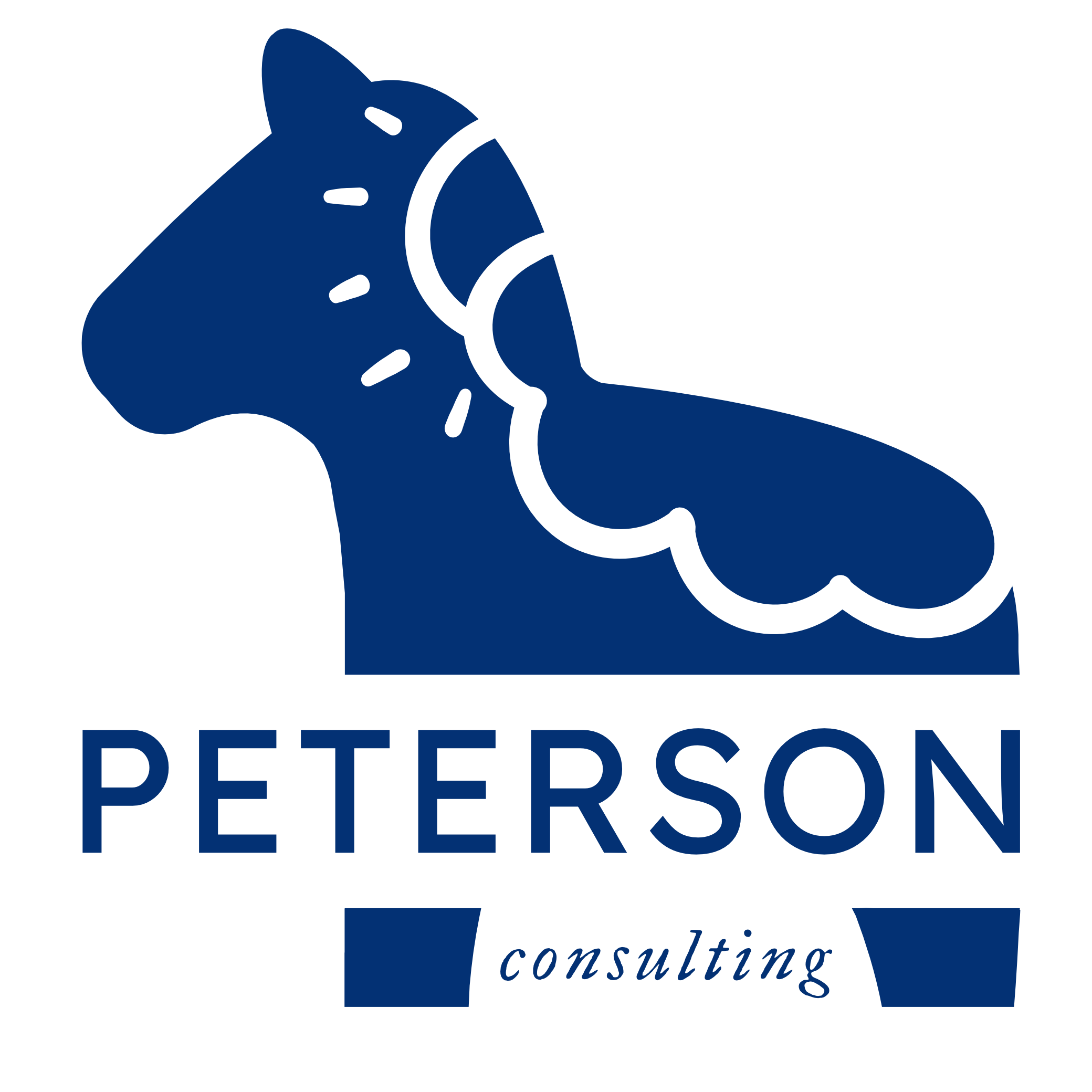8 Themes for Building Organizational Resilience

I found a research gem from the University of Ottawa for my fellow entrepreneurial trauma survivors and wanted to share it with y'all! Enjoy!
~ Emily Ann Peterson
What is Organizational Resilience?
I can't be the only person who's set a goal for herself, made really big plans, and then had those plans get completely thwarted by some unforeseen event, tragedy, diagnosis, crisis, etc. I know I'm not alone in this experience—pandemic anyone?! Our individual ability to recoup, recover, and pull ourselves back up would be considered personal resilience.
My own definition of Organizational Resilience is a business' ability to retain forward momentum under difficult and unexpected circumstances. Applied to my badass clients (aka trauma survivors), we spend a lot of time discussing their own organizational resilience, like creating a personal collection of tools and resources for bouncing back from "down days" when the long-term effects of trauma feel heaviest.
Organizational Resilience Indicators Based on a Salutogenic Orientation, (Shannon Tracey, 2015) click here for the .pdf, It's a Master's of Health Science thesis from the University of Ottawa with supervision from both their Health Sciences Department and School of Management. (I absolutely love finding new research that applies to the fields of both trauma and business. I was a nerdy, happy camper the other day, lol!)
To quote directly from Tracey's thesis: "Organizational resilience is the ability of an organization to resist, absorb, recover, and adapt to the altered environment following a disaster" (Kahan, Allen, George, & Thompson, 2009; McManus, Seville, Vargo, & Brunsdon, 2008)
Tracey also identified and discussed 8 themes in salutogenic Business Continuity Plans (BCPs) in light of interruptions, external deviations, or other crises that may arise for an organization or business. Pictured above is the resulting "Emergent Conceptual Model of Salutogenic Indicators for Organizational Resilience" which I found interesting, especially considering how its doughnut shape visually resembles Kate Raworth's "Doughnut Model of Economics" but I digress...
What is Salutogenic vs. Pathogenic?!
Yeah, it's a couple of hoity-toity, unapproachable-sounding words, huh?
Salutogenic essentially refers to a strengths-focused approach aimed at increasing an optimal state of being. Conversely, pathogenic refers to anchoring focus on identifying problems and seeking solutions to counteract them. Pathogenic approaches are frequently seen in a "Mad Men" era business model—patriarchal and hegemonic—but again, I digress...
(ex: If you've ever walked into a doctor's or boss' office or had a friend prone to criticizing you... and you felt like they were constantly asking "What's wrong? Why are you here? Let's fix all your flaws." Then you've experienced a pathogenic approach, aka the opposite of the salutogenic approach.)
You'll hear the word salutogenic a lot if you're in the trauma or (mental) health world, as it's increasingly more common practice as their standard of care these days. It doesn't surprise me that the research setting for this paper was in health sciences (hospitals, etc.) and entailed discussion(s) of events like 9/11. Despite the original context, the research applies to ALL businesses, especially if they are hoping to survive things like pandemics, recessions, and other unexpected predicaments.
8 Themes of Salutogenic Indicators of Organizational Resilience
My own interpretation or "translation" of Tracey's research is added to each theme and as well as a few quotes directly from the thesis (Tracey, 2015). :-)
1. "Situational awareness and asset literacy contribute to organizational adaptive capacity"
Our capacity for resilience is strengthened when we become aware of our context, strengths, resources, and other assets.
Tracey's defined these terms as follows:
- Situational Awareness: "Knowledge of the strengths, weaknesses, opportunities, and threats present at the micro, meso, and macro-level of an organization" (p 54, Tracey, 2015)
- Asset Literacy: "Awareness of assets, recognizing the value or potential contribution of the assets, knowing how to mobilize them, having confidence and motivation to activate them" (p 54, Tracey, 2015)
Note: This point and many of those below 100% support the concepts outlined in my book, Bare Naked Bravery: How to Be Creatively Courageous—that's fun!
2. "Investing in people enhances organizations’ abilities for adaptive response"
In other words, if we expect our businesses to be resilient, then we must invest in our people accordingly—from everything Human Resources to safety, training, and their personal preparedness...
This leads me to believe that the same logic would apply on an individual basis too: If I expect to be resilient, then I must invest in myself accordingly. (see point 7 below too)
3. “The plan is important… but resilience is the ability of an organization to adapt itself and to modify its approach depending on what it’s being hit with.”
A resilient business built on salutogenic approaches deprioritizes "the plan" as the holy grail of accomplishment.
A quote from Tracey's focus group: "When they had 9/11 there were organizations that never went down even though they were on the site because they had processes in place. And I think just having that confidence that you’ve got the first ten minutes or the first couple of hours, or five hours taken care of and then you can start into action. Where if you don’t have anything in place you’re just flummoxed, you don’t know where to start.”
4. "Business Continuity Plans are living documents and when they are embedded in the organizational culture they become ‘the norm’"
Adding to this from personal experience, the best contingency plan is one that is not easily forgotten and practiced often.
Other words these kinds of documents were described by Tracey were: "evergreen," "living and breathing," and "organic"
The School of Bravery already has one of these, cool! Check out our *working* Manifesto of Bravery here!
5. "A culture that celebrates experience, expertise, and regards mistakes as opportunities for learning provides a safe environment for sharing information"
Resilient businesses constructed through salutogenic means will nurture safe learning environments by lowering the risk for making mistakes, making it easy to share information, and celebrating the experiences therein. Tracey describes this as a "no-blame, no-shame" environment.
A quote that caught my eye (for obvious musical reasons): “It’s kind of like learning an instrument in that you can’t just show up at a concert and pick up a guitar and expect to just kill it. You have to practice, you have to practice, and you have to practice. Training is key in that function because it gives you—I mean, it provides learning opportunities, it provides room for error in a controlled environment, and also gets people thinking about things they typically don’t think about Monday to Friday, 9 to 5.” (p 62, Tracey, 2015)
6. "Organizational resilience is supported by transformative leadership"
It's extremely hard to foster organizational resilience if the leadership doesn't understand or advocate for it. Tracey and focus group participants mentioned that this type of leadership reduces confusion, actively promotes the long-term survival of the organization, and takes responsibility for any outcome.
7. "Collaborative practice requires awareness of the optimal balance between working with others and working alone"
Resilient organizations recognize a person's collaborative strengths, even if that might appear counter-productive on the surface (putting attention on self first). From the focus group: "The basic caregiving principle, which is sort of a source of what this is, is that you put your own oxygen mask on first." (p 67, Tracey, 2015)
8. "Communication sets the stage for common understanding"
If a Business Continuity Plan is created, make sure it is written in language that everyone understands and can easily use.
Example from the focus group of what this does not mean: “I was in the pandemic committee… we worked on mostly communications… It seems to be a problem… and that is getting the language together. That the fire department, when they say we have a level one threat or a level five threat, it means the same for them as it does for the police, as it does for the university, as it does for the man on the street. That kind of communication isn’t in place yet.” (p 70, Tracey, 2015)
3 Important Insights
- Remaining problem-focused or solution-oriented (pathogenic) might not be the best recipe for our organizations and businesses going forward. While words like "salutogenic" and "pathogenic" might feel obtuse for many non-healthcare business owners, there is an immense amount of value in applying them to your own business. Tracey made a significant case for building salutogenic characteristics that are strengths-focused. It's clear that a salutogenic approach is worth implementing into our businesses, leadership, project planning, strategy, team culture, quality improvement, and even cost planning.
- Hiccups, unexpected events (pandemics), and other crises are not just possible, they are probable. It's important that we build continuity and resilience into our businesses and project planning—one of the best ways to do this is through salutogenic methods. Tracey laid out some substantial reasons and evidence for why a non-healthcare business should concern themselves with trauma-informed approaches like salutogenic business strategy and corresponding transformational leadership.
- Organizations & business owners are not helpless in the face of uncertainty. They can actively do something to both help their employees and improve the overall health of the organization. Even the US Department of Defense is strongly advocating for salutogenic approaches in the military and applying it to architecture (Brick, 2022)!
If any of this sounds interesting or you'd like to dive deeper, I recommend taking a look at Tracey's original thesis. Plus, in the grand scheme of scholarly reading, it's relatively easy to digest. Access the .pdf from the University of Ottawa here.
Overall, I was extremely encouraged to find Shannon Tracey's thesis and look forward to encouraging my own business consulting clients to learn from it and other trauma-informed approaches too!
I'd love to hear and see how these or similar themes play out in your career or business. Drop a comment below! :-)
Citations & Sources
Brick, S. (2022). Improving health in the military and beyond using salutogenic design. Facilities, 15/16, 54–71. https://doi.org/10.1108/f-06-2021-0058
Kahan, J., Allen, A., George, J., and Thompson, W. (2009). Concept development: An operational framework for resilience. VA: Homeland Security Studies and Analysis Institute. Retrieved March 29, 2014, from http://www.homelandsecurity.org/
McManus, S., Seville, E., Vargo, J., and Brunsdon, D. (2008). Facilitated process for improving organizational resilience. Natural Hazards Review, 9(2), 81-90. https://doi.org/0.1061/_ASCE_1527-6988_2008_9:2_81_
Tracey, S. (2015). Organizational Resilience Indicators Based on a Salutogenic Orientation. Université d’Ottawa / University of Ottawa. https://doi.org/10.20381/RUOR-2856
Categories
- This is Your Brain (5)
- Trauma + Business (8)
- Religious Trauma (5)
- Trauma 101 (5)
- FAQs (9)
- Social Entrepreneurship (6)
- Economics & Sustainability (9)
- Feminism & Patriarchy (4)
- Deconstructing Capitalism (8)
- Emily Ann Says (11)
- Assessments (7)
- Self-Regulation Tools (7)
- Building Resilience (7)
- Helpers & Healers (4)
- Dear Congress (1)


0 comments
Leave a comment